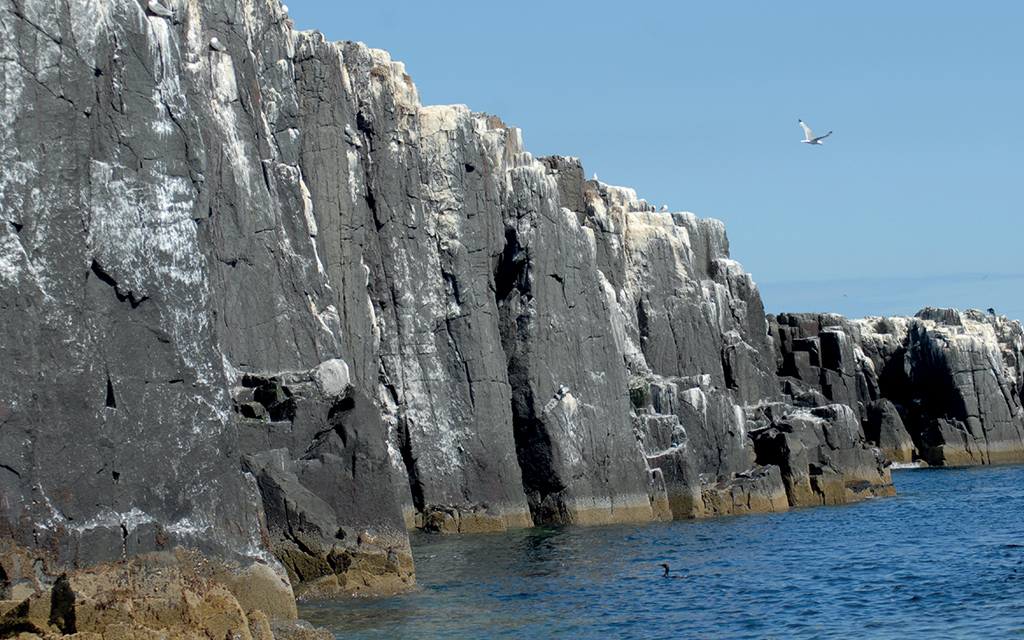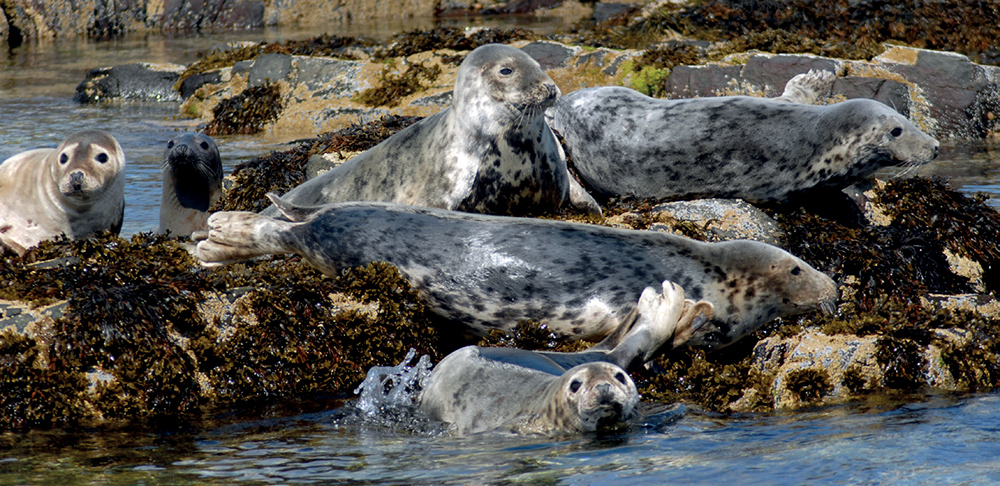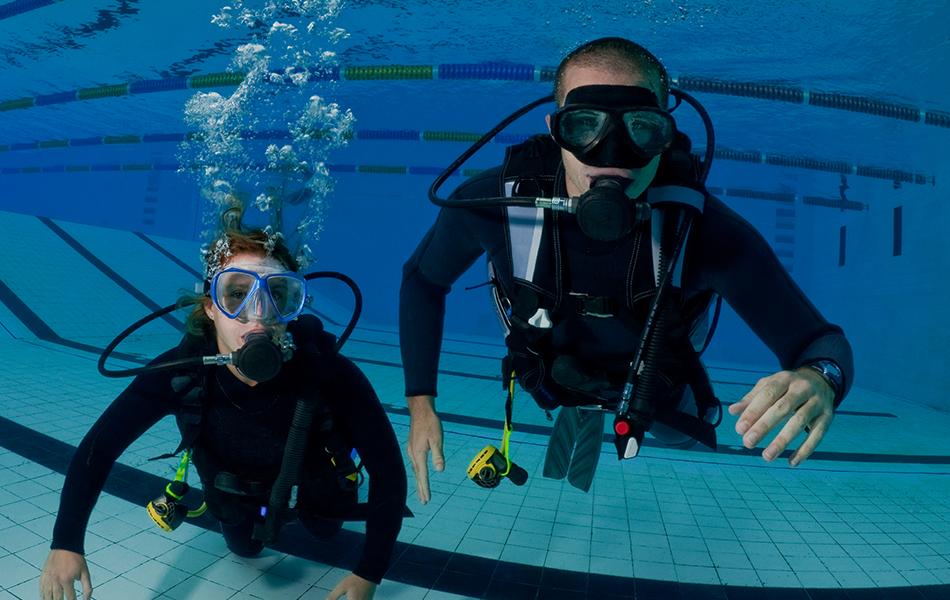
Our science writer Becky Hitchin continues her tour of Great Britain’s coastal geology: Farne Islands to Chesil Beach.
You may remember that back in the January issue, we took a journey around the shores of Scotland to look at how the underlying geology affects our diving. This time I’d like to carry on round the English coasts, which start just a smidge south of our favourite weather-beaten sites of St Abbs and Eyemouth.
First we come to the Farne Islands, known and loved for encounters with voracious carnivores who like chomping on fins and various other bits of diving equipment. Seals are an essential part of Farne Islands diving, and the presence of these grey seals does again depend on geology. We have two species of seals common to UK shores – grey seals and common (harbour) seals. While common seal pups are born with the ability to swim, grey seal pups are not. So grey seals prefer living around rocky shores, where they can pup slightly inland. If the Farnes were all sandy, it’s likely that we’d be swimming with common seals instead.
the Southern North Sea... a very different environment from the old volcanic rocks and clear upwelling waters of the west coast
Moving further south, we come into more challenging areas of diving. From north Norfolk round to the English Channel, just getting in the water can be demanding. But rewarding. North Norfolk shores are home to a Marine Conservation Zone protected for incredible, delicate chalk reefs, likely to be the longest chalk reef in Europe, possibly the world. The life growing on and living among the chalk arches and reefs is different from that in any of our other coasts, with at least one sponge known only from these reefs. So why is the diving different from that further north? Well, we’re now jumping into the Southern North Sea, which is a very different environment from the old volcanic rocks and clear upwelling waters of the west coast. The Southern North Sea is a shallow, contained basin, no more than 40m deep in most places, with huge sediment loads coming in both from large rivers such as the Thames and from eroding cliffs. This generally leads to a heavy sediment load in the water, and often frustrated divers and photographers.

Moving south, these sandy, muddy, sediment shores continue round to north Kent, where again chalk outcrops around the Thanet headlands. One interesting dive there isn’t a geological issue, but a manmade one. If you’re ever near Walpole Tidal Pool, go and have a swim, snorkel or dive. It’s amazing what you can find in that pool on the beach: sponges, lobsters... even lumpsuckers.
We head round to the English Channel, the domain of deeper wrecks and strong tidal currents. A buddy and I once dived on the Dornier DO17 discovered off southern Kent. I didn’t actually see it. Or my buddy. Or the seafloor. I spent 15 minutes hanging onto the line, feeling like a flag flying from a flagpole in high winds in zero visibility before crawling back up the line and flopping into the RIB. But really, the diving round there is stunning, on good days.
Leaving Kent, we head through Sussex (the SS Pentrych is a great dive out of Brighton by the way), Hampshire and on to Dorset where the intimating expanse of Chesil Beach awaits divers. I actually did my first ever open water dive at Chesil, and wondered what on earth I was letting myself in for. Here the interesting geology is also above water. This huge barrier beach created of pebbles of just the right size to annoy the tired diver was formed at the end of the last Ice Age, as Dogger Bank was being lost. It was formed from sediments initially from Lyme Bay, and has been a fully-formed feature in that area for at least 4000-5000 years. Exactly the time it feels for me to drag myself up over the beach after a dive. Next month, we’ll head through Cornwall and Devon to Wales’s islands and tidal straits, up to the north west coast of England and back to where we started.
Article ‘As above, so below’ by Becky Hitchin first published in SCUBA magazine, Issue 133 March 2023.




